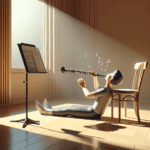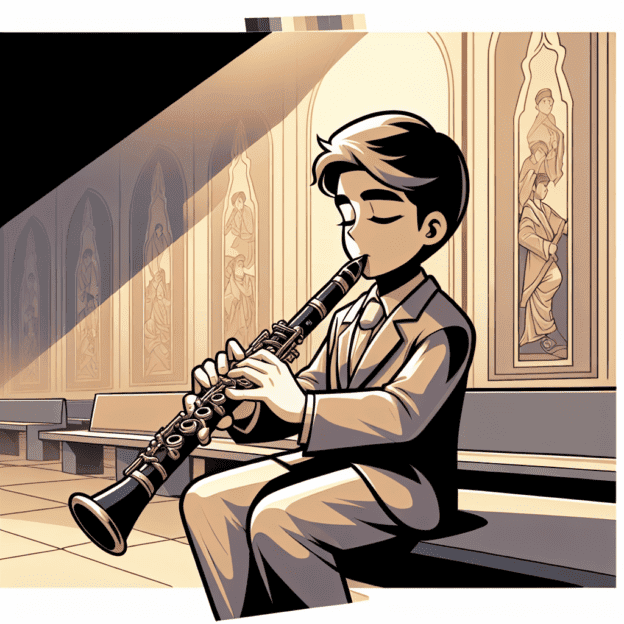Playing the clarinet with a full, rich sound is a dream for many musicians, whether you're just starting out or have been playing for years. Achieving that beautiful tone takes a mix of good technique, the right gear, and lots of practice. Let's explore some tips and tricks to help you play the clarinet with a full sound and stand out in any performance!
Understanding Breath Support
One of the key elements to producing a full sound on the clarinet is proper breath support. This means using your diaphragm and abdominal muscles to control the airflow through your instrument. Consistent and controlled airflow is crucial for maintaining a steady tone and avoiding a thin or weak sound.
To improve your breath support, try deep breathing exercises. Sit or stand up straight, place your hands on your abdomen, and take deep breaths, feeling your stomach expand with each inhale. As you exhale, use your abdominal muscles to control the release of air. This practice can help strengthen your diaphragm and improve your overall breath control.
Embouchure: The Key to a Full Sound
Your embouchure, or the way you shape your mouth and lips around the mouthpiece, plays a big role in the quality of your sound. A proper embouchure helps to create a focused and resonant tone. To form a good embouchure, follow these steps:
- Place the mouthpiece in your mouth so that your top teeth are resting on the top of the mouthpiece.
- Roll your bottom lip slightly over your bottom teeth to create a cushion for the reed.
- Ensure that your lips form a seal around the mouthpiece, but avoid biting down too hard.
- Keep your chin flat and pulled down to avoid puffing your cheeks.
Experiment with the positioning of your embouchure to find what works best for you. Remember, a relaxed but firm embouchure will allow for better control and a fuller sound.
Choosing the Right Equipment
The equipment you use can significantly impact the quality of your sound. While there are many reputable brands out there, it's important to find what works best for your playing style. Consider the following components:
| Component | Tips |
|---|---|
| Mouthpiece | Different mouthpieces have varying tip openings and facing lengths, which can affect your tone. Experiment with different mouthpieces to find one that complements your embouchure and playing style. |
| Reeds | Reeds come in various strengths and cuts, each affecting the sound differently. A reed that's too soft may produce a weak sound, while a reed that's too hard can be difficult to play. Try reeds of different strengths and brands to find the perfect match for your mouthpiece and playing style. |
| Barrel | The barrel of your clarinet can also impact your sound. Some barrels are designed to enhance certain tonal qualities, such as warmth or brightness. Experimenting with different barrels can help you achieve the desired sound. |
Practice Long Tones
Practicing long tones is an excellent way to develop a full sound. Long tones help you focus on maintaining a steady airflow, controlling your embouchure, and listening to the quality of your sound. To practice long tones:
- Start with a comfortable note, such as a middle C.
- Play the note for as long as you can, maintaining a consistent tone and volume.
- Listen to the sound you produce, making adjustments to your embouchure and breath support as needed.
- Gradually move to other notes, both higher and lower, to develop consistency across the range of the instrument.
Incorporating long tones into your daily practice routine can lead to noticeable improvements in your sound quality.
Focus on Dynamics
Playing with a full sound doesn't mean playing loudly all the time. Dynamics, or variations in volume, are essential for musical expression. To practice dynamics:
- Choose a piece of music or a scale to work on.
- Start by playing at a soft dynamic (pianissimo) and gradually increase the volume to a loud dynamic (fortissimo).
- Pay attention to maintaining a consistent tone quality at all dynamic levels.
- Practice crescendo (gradually getting louder) and decrescendo (gradually getting softer) to develop control over your sound.
Mastering dynamics will not only enhance your musicality but also contribute to a fuller, more expressive sound.
Listen and Learn
Listening to recordings of great clarinetists can inspire and inform your playing. Pay attention to their tone quality, articulation, and phrasing. Try to emulate their sound and techniques in your practice. Additionally, recording yourself and listening critically can help you identify areas for improvement and track your progress over time.
Sound Analysis Exercise
To improve your critical listening skills, try this exercise:
- Choose a recording of a professional clarinetist.
- Listen to a short passage (30 seconds to 1 minute) multiple times.
- For each listening session, focus on a different aspect:
- Tone quality
- Dynamics
- Articulation
- Phrasing
- Take notes on what you observe in each area.
- Try to incorporate these elements into your own playing.
Consistent Practice and Patience
Developing a full sound on the clarinet takes time and dedication. Consistent practice is essential for building the necessary skills and muscle memory. Be patient with yourself and celebrate small improvements along the way. Remember, every great clarinetist started as a beginner and achieved their sound through persistent effort and practice.
Whether you're playing a cherished Martin Freres clarinet or another instrument, these tips can help you achieve a full, resonant sound that captivates your audience. Keep experimenting, practicing, and refining your technique, and you'll be well on your way to mastering the clarinet.







